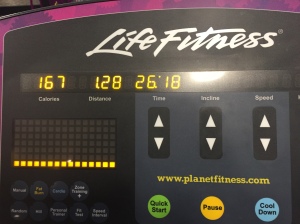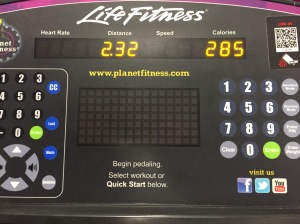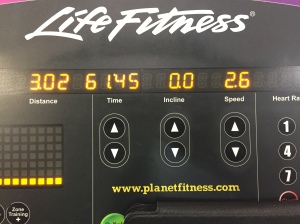Artificial Intelligence is being used more and more in business communication. While companies are able to gain better insights and increase the profitability of their technology investments, there are some concerns. Lack of privacy is something that most consumers care about. Centralizing data for AI and machine learning models to work creates a single point of failure. In order to protect consumers and their company, communications professionals need to develop principles and a roadmap for rolling out these initiatives.
Artificial Intelligence (AI) is the ability of machines to resemble human capabilities with different degrees of technical sophistication and autonomy[1]. AI is actually an umbrella term that covers several interrelated technologies, such as speech to text, natural language processing (NLP), predictive analytics, and machine learning[2].
AI and machine learning systems automate repetitive tasks using large data sources. Typically, the more data available means better-defined insights. AI is being used more and more for everyday tasks. Some examples include sorting photos, deciding where to eat, processing receipts for work, and even organizing a calendar[3].
AI is also used for gathering, analyzing, and combining large amounts of information from many sources. What has made AI attractive for use in information gathering in the first place are three things: speed, scale, and automation. AI can do calculations faster than human analysts and in theory, the computation can be increased by simply adding more hardware.
People increasingly use AI for everyday tasks, from organizing their calendars to processing business receipts to sorting photos. For many of these services, users expect that no human is reviewing or processing their data. This is a privacy benefit because consumers are often more comfortable with computers processing their personal data than humans[4].
AI is also important for a company’s bottom line. In a recent survey, 80 percent of executives have stated that they are seeing moderate value just from the AI deployment[5].
AI is used in business communication in a number of ways:
Chatbots – Chatbots are programs that usually reside on a web page or within a messaging application. These programs use artificial intelligence algorithms to determine what a person is looking to know more about and come up with replies.
Smart campaigns – Smart campaigns use A.I. algorithms on online advertising platforms like Google ads, Facebook ads, and Instagram ads. Costs per click and customer acquisition costs can be determined and ads can be automatically matched up with users who have a projected higher return on investment.
Smart call centers – Virtual call centers have become a popular solution for companies trying to reduce the size of their call centers. Technologies allow for voice over the Internet and integrations with different tools in order to allow the operators to understand what a user is talking about and how they can best solve any issues.
Email filtering – AI can easily sort and filter out different types of email in business communication. Keywords can be found and even things like flight reservations and meeting invitations can be sorted and added to a calendar. As email spam becomes a bigger and bigger problem, machine learning helps users control their inbox so important messages get through.
Smart replies – Programs like Gmail can use data from millions of previous emails in order to create a suggested reply. This saves users time and frustration. According to Forbes, employees spend an average of two and a half hours per day replying to emails.
One of the biggest uses of artificial intelligence in business communications is creating new solutions for the customer support process. Customers have come to expect an “always-on” model. Accenture has been partnering with organizations in order to create virtual agents and intelligent automation tools. They attempt to use AI to resolve issues based on context and customer intent. The AI bot can use keywords from previous interactions to provide answers. The idea behind this is to help companies modernize and drive digital adoption. This solution also allows for consistent messaging and communications.
The strategy and technology consulting firm, Accenture, sees this having an impact in several areas, including:
| Area of Focus | Benefits |
| Intelligent Financial Crime Detection | 30% reduction in false positives 40–50% less effort spent on manual tasks 15–35% decrease in Know Your Customer reviews |
| Intelligent Supply Chain | 20–30% forecast accuracy improvement 20% reduction in lost sales |
| Intelligent Revenue Growth | 10-30% product profit increase 43% increase in campaign customer engagement 72% increase in revenue resulting from personalized support |
| Intelligent Healthcare | Helping to reduce over 50% of avoidable hospital admissions $300M annual medical cost reduction 50% reduction in medical supply chain costs |
As we can see by Accenture’s approach, there is a significant benefit to applying artificial intelligence practices in business.
As with any new approach or new technology, there are always pros and cons to implementing AI solutions in business communications. In fact, in 2016 the Obama administration announced a series of workshops to explore the benefits and risks of AI[6].
The biggest concern most people have focuses on privacy. In order to construct valuable recommendations and perform tasks, the program must have a certain amount of information about its user. While this may be concerning, artificial intelligence actually increases privacy because fewer humans see the user’s personal information. People also tend to use AI more and more understanding that they are more comfortable with computers processing their data rather than humans. The following video is a keynote by Michael
Another concern is the increased use of AI by hackers. In order for AI and machine learning to succeed data needs to be centralized. The more personal information that is stored on computers, the more valuable the targets are. Data experts are working on ways to install false data, known as adversarial examples, in order to confuse the hacking algorithm.
One of the biggest problems with AI is bugs that cause misclassification of data. This is a weakness in machine learning models. These misclassifications can cause unpredictable accuracy rates. In communications, an incorrect response or bad recommendation can negatively impact the customer experience.
AI is also inherently adept at utilizing large data sets for analysis and is arguably the only way to process big data in a reasonable amount of time. Finally, an AI can perform the designated tasks without supervision, which greatly improves analysis efficiency. These characteristics of AI enable it to affect privacy in a number of different ways[7]:
- Data Exploitation
- Identification and Tracking
- Voice and Facial Recognition
- Prediction
- Profiling
A pretty serious negative effect is the potential for AI models to discriminate unintentionally against protected classes and other groups by weaving together zip code and income data to create targeted offerings[8].
One approach to addressing the risks of centralized data in AI is to use federated learning. Federated learning secures data by decentralizing it. Developers can still use the data. It just can’t be tied to a specific user[9]. Also, data can be masked in order to avoid personal information to be leaked. With a large volume of data, masking it makes sense[10].
At the end of the day, there are a lot of concerns by consumers about privacy and data being leaked through the use of artificial intelligence. It is up to solution providers and researchers to consider these concerns when rolling out new products. Artificial intelligence is hugely helpful in business communications, but it must be approached with caution.
The Chartered Institute of Public Relations’ #AIinPR project created a list of actions to better understand AI in communications:
- Develop guiding principles. Every company deploying AI needs to think not just about how to deliver better services, but also how to use AI ethically and transparently. Communication professionals can help their companies or clients think through the use of AI.
- Learn about the tools at your company. AI-enabled tech can save a ton of time, especially on manual tasks that involve populating spreadsheets and analyzing data. Find out what your company has already and start putting it to work. Better yet, identify the top three things you’d like AI to help you with and match new or existing tools to your needs.
- Build the internal infrastructure and processes you’ll need. Communications teams, like tech companies, will need guidance about how to handle data, and exactly what AI can and can’t touch. They’ll also need to understand algorithmic bias — how AI can unintentionally amplify sexist and racist attitudes. Talk to your tech teams to understand how your organization adopts or creates new tools, and what kind of vetting takes place to mitigate bias.
- Go deep on bots and digital assistants. While it wasn’t popular three or four years ago, voice is rapidly increasing its presence. Many companies are using digital assistants. Thinking about AI is critical. Chat and messaging are increasingly important, too. Companies in China have been using bots in customer interactions for years.
Artificial Intelligence is not a trend that will fade away. Despite privacy concerns, businesses are still embracing AI technology and using it to guide their company’s narrative. With proper controls and some common sense, we can protect privacy while using this new technology.
Below are a couple videos describing where AI is taking us, and some of the concerns we face.
[1] (Crnoja, 2019)
[2] (Yin, 2018)
[3] (Quinn & Castro, 2018)
[4] (Quinn & Castro, 2018)
[5] (Cheatham, Javanmardian, & Samandari, 2019)
[6] (Crnoja, 2019)
[7] (Dean, 2018)
[8] (Cheatham, Javanmardian, & Samandari, 2019)
[9] (Crnoja, 2019)
[10] (Provazza, 2017)





